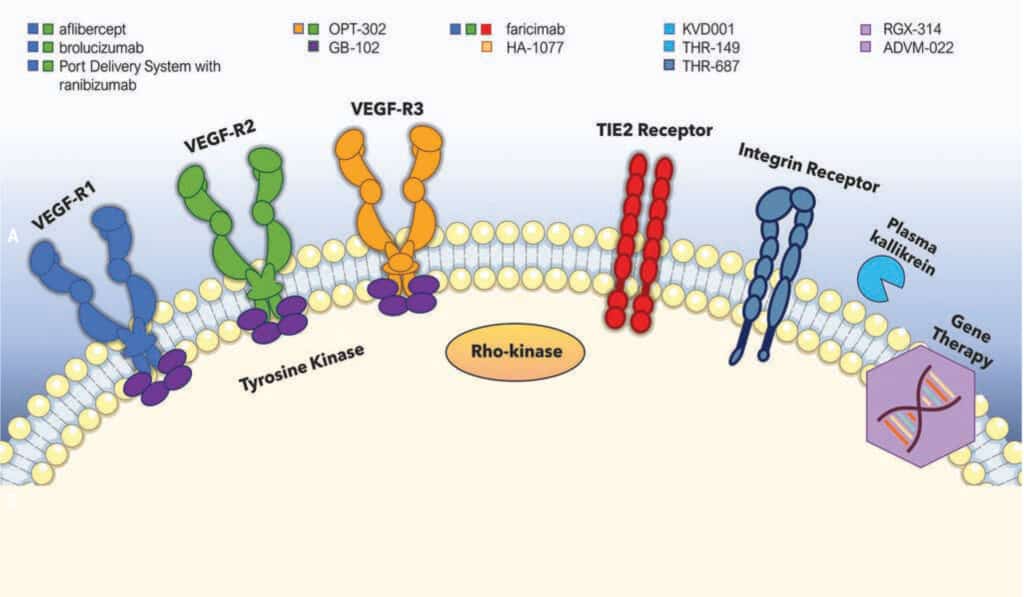
Faricimab is a treatment for macular degeneration, specifically targeting Angiopoietins and the Tie-2 Pathway. Here we discuss a review of relevant clinical trials led by Dr. Arshad Khanani.
The review article PDF is available for download here, and below is a concise summary as well as additional, helpful resources related to Faricimab.
Summary:
Angiopoietins and Tie-2 Pathway: Initially, the review discusses angiopoietins (Ang-1 and Ang-2) and their interactions with the Tie-2 receptor. Ang-2 acts as a partial agonist or antagonist, and its inhibition consequently reduces vascular leakage and improves organ function.
Vascular and Extravascular Functions of Angiopoietin-2: In addition to the above, Ang-2 has functions in both vascular and extravascular settings for macular degeneration. Particularly in hyperglycemia and hypoxia, it plays a role in stimulating pericyte loss, neovascularization, and the breakdown of the Blood Retinal Barrier (BRB).
Diabetic Retinopathy and Macular Edema: Moreover, the article explores Ang-2’s role in macular degeneration, diabetic retinopathy and diabetic macular edema (DME). It emphasizes the importance of the retinal vasculature and the sensitivity of the retina to pericyte loss.
Angiopoietin-Like Proteins (ANGPTL) and Metabolism: Additionally, the paper delves into ANGPTL, which are similar to angiopoietins but have distinct roles in glucose and lipid metabolism. Specifically, ANGPTL-3, ANGPTL-4, and ANGPTL-8 are discussed in this context.
Treatment and Therapeutic Targets: The document also mentions various treatments and innovative therapies for neovascular age-related macular degeneration and diabetic retinopathy, including surgical innovations.
Review:
The systematic review article provides a comprehensive analysis of angiopoietins and their role in macular degeneration, vascular biology, inflammation, and metabolic processes. Notably, the focus on diabetic retinopathy and the connection between angiopoietins and metabolic disorders adds significant value.
The paper’s strength lies in its integration of various studies and research findings, thereby providing a holistic view. Furthermore, the exploration of ANGPTL and their role in metabolic processes is particularly intriguing and opens avenues for further research.
However, the study might be challenging for a lay reader due to its technical language and complex concepts. Therefore, its target audiences are medical professionals or researchers in the field of biology, medicine, or related disciplines.
Overall, this review article is a valuable resource for those interested in the intricate interplay between angiopoietins, vascular biology, and metabolic disorders. Consequently, it offers insights that could potentially lead to new therapeutic approaches for conditions like diabetic retinopathy and metabolic syndromes.
https://www.gene.com/download/pdf/Vabysmo_Product_FactSheet_4.13.23.pdf
http://www.retinapodcast.com/episodes/2019/3/5/episode-157-march-retinal-physician-review-with-dr-shriji-patel-including-discussion-of-complement-inhibition-for-amd-faricimab-brolucizimab-and-prefilled-syringes-for-injectable-medications?rq=faricimab